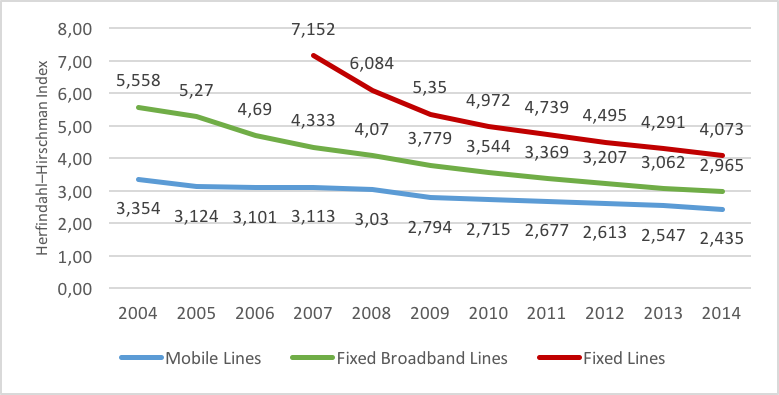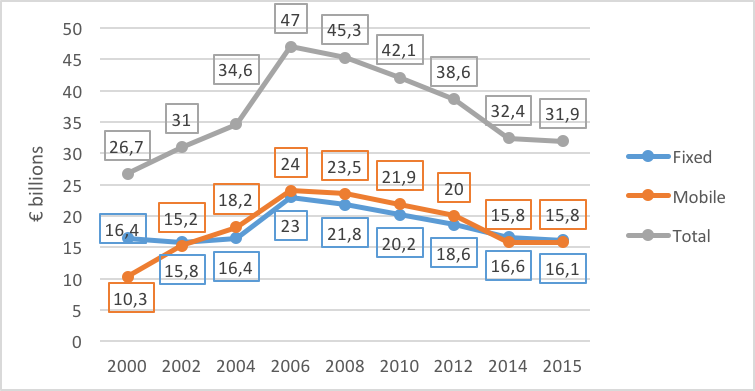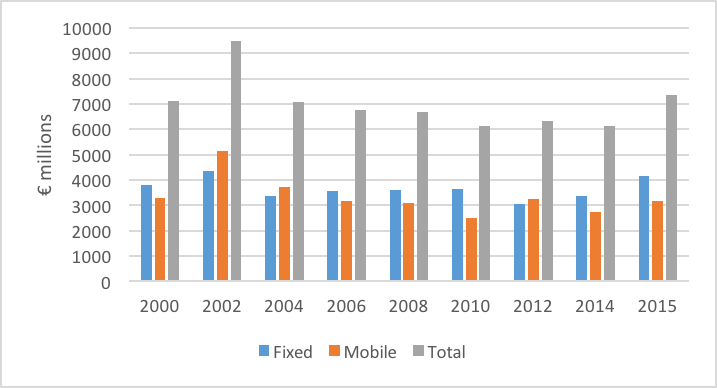Abstract
In this paper we analyse the evolution of the Italian telecommunications market since the beginning of the liberalisation and privatisation process in Italy started in the mid-nineties. The role of competition and regulatory authorities is also considered. We present a survey of the main regulatory interventions in the industry as well as the market structure and its dynamics in the period 2000-2015. We also provide some insights on the current state of the ultra-fast broadband access and the evolution of the so called ?next generation networks?. In this regard, the recent Italian government?s plan regarding the deployment of the broadband services is also discussed. Our research can provide helpful information on telecommunications trends in Italy and would help to assess past as well as ongoing policies.
Introduction
In 1987 the European Commission established a set of directives regarding market liberalisation to be followed by member states. In particular, the Green Paper in telecommunications sector was introduced in order to protect consumers? rights in this sector. As well as in other member states, market liberalisation in Italy was driven by these EC directives. Establishment of the antitrust authority (AGCM) in 1990 and the independent telecommunications regulator (AGCOM) in 1997 is the direct result of implementing these policies. The outcome of the efforts was the full liberalisation of the telecommunications market starting from January 1998. From this date on the focus of the different authorities in the Italian telecom market was to promote competition in the market and to provide regulatory interventions to support this target. On the other hand, since the start of the millennium the rate of technological developments has been increasing. Therefore, in order to satisfy consumer needs, the authorities established new sets of regulations to promote investments as well as technological innovations in the telecommunications infrastructure.
In this paper, our aim is to present a brief review of the Italian telecommunications industry and its evolution through the past decades. We will also explain the current status of the industry as well as possible future scenarios of the telecom market in Italy. The structure of the paper will be as follows: in Section 2 a brief history of the telecommunications industry in Italy will be presented and in Section 3 the evolution of the Italian telecommunications regulation and its institutional framework will be discussed. Then we will analyse the past and current market structure as well as the sector dynamics in section 4. Section 5 includes the recent and possible future developments in telecom infrastructure networks and a discussion of the Italian strategy for broadband deployment. Finally, in Section 6 a set of policy recommendations regarding current debates in the sector are provided.
The history of telecommunications and its liberalisation process in Italy
Liberalisation of the telecommunications industry in Europe started in 1987 when the Green Paper on the Development of the Common Market for Telecommunications Services was released and the European Commission provided a set of directives for the liberalisation process. In Italy, as well as in other member states, these directives have been adopted to meet the liberalisation goals, although the efforts did not start until 1992 when the management of previously State-owned telecommunications services, named ASST (Telephone Services State Agency) and the Posts and Telegraphs Administration (PT), were given to concessionaires.
Further in 1994, Telecom Italia was established by merging all the existing concessionaires except one, TELEMAR. Telecom Italia Mobile (TIM) was established a year later in 1995. Meanwhile Omnitel Pronto Italia obtained the government?s permission to provide mobile services in a national setting. An agreement was achieved between Telecom Italia and Omnitel and another one between Omnitel and TIM to provide access to Telecom?s fixed network as well as national roaming for Omnitel. These were the first signs of a competitive market in the Italian telecommunications industry.
In 1997 the law for the establishment of the telecommunications National Regulatory Agency was approved by the Italian parliament and AGCOM (Autorit? per le Garanzie nelle Comunicazioni) started its activities. In the same year Telecom Italia and STET (the holding company) were merged, adopting the name Telecom Italia.
In 1998, further attempts to promote competition resulted in the privatisation of Telecom Italia by the Ministry of Treasury. However, 3.4% of Telecom Italia?s shares remained in control of the Treasury and a ?golden share? decree was established in order to protect the vital interests of the public by providing the State the ability to intervene in the company's decisions, setting limits, vetoing choices and even to block an acquisition of Telecom Italia. This special power of the State was adopted to limit the potential lack of interest from the investors to compete in the acquisition of shares of the telecom incumbent. However, in spite of the golden share rule, in 1999 Olivetti managed to take control of Telecom Italia by acquiring 52% of its shares and later, in 2002, to reduce the budget deficit, the shares belonging to the Treasury were also sold. Therefore, from 2002, Telecom Italia has been completely privatised.
Institutional framework in the Italian telecommunications sector
In this Section we present the legal framework governing the Italian telecommunications sector and introduce the institutions holding regulatory power in the industry. We also provide a brief description of the authorities? duties and the existing regulations.
The Italian competition authority (AGCM)
In Italy it was in 1990 that the antitrust law was introduced and the main organisation in charge of regulating competition, the Autorit? Garante della Concorrenza e del Mercato (AGCM), was established. This means that AGCM is responsible for administering the Competition and Fair Trading Act (law number 287 of 1990). Nevertheless, each infrastructure area has its own sector specific regulator. AGCM is an independent authority, whose core purpose is to ensure that the market is accessible for everyone and competition is not hindered. It also has the responsibility of protecting consumers against unfair commercial practices and misleading advertising (ACCC/AER, 2013). AGCM, furthermore, has the responsibility of identifying market power abuses, mergers resulting in significant market power for one party and any activity which could result in limiting competition in the market.
Participation of the competition authority in the telecommunications sector was intense at least until 1997, when the Autorit? per le Garanzie nelle Comunicazioni (AGCOM) was established.
The independent telecommunications regulator (AGCOM)
As mentioned before, AGCOM (Autorit? per le Garanzie nelle Comunicazioni) was established in 1997 by the Italian parliament by the introduction of the Law No. 249.[i] This institutional organisation has a structure which gives it the unique ability of having horizontal regulatory supervision over the whole communications sector including telecommunications, the audio-visual industries and publishing (OECD 2001). According to the law, AGCOM should be fully independent and not to be influenced by political interests. It has full regulatory authority over the telecommunications sector including the regulation of interconnection and access to fixed networks and spectrum.
AGCOM is based in Naples and Rome and it is composed of a President, a Council and two committees ? one for infrastructure and networks, and one for services and products ? each of which has four commissioners. The fact that AGCOM members are chosen by the Senate and Parliament has caused some fears about its real level of independence.
Some of the core activities of the two committees are as follows:
The commission for infrastructure and networks deals with:
- Regulating the dominant operator?s tariffs in order to balance the price and cost of services;
- Regulating interconnections in order to ensure access to the telecommunications infrastructure for all current and entering operators;
- Determining the scope of the universal service, as well as the principles for calculating and allocating their related costs;
- Planning the frequency allocations, which should be presented to the Ministry of Communications and gain its approval;
- Resolving disputes between service suppliers and consumers.
The commission for services and products deals with:
- Monitoring the level of quality of service;
- Monitoring the distribution of services and products;
- Managing the interplay between network operators and the service resellers.
The Council, which comprises the President and all Commissioners, also has two tasks including:
- Supervising the functioning of the market, ensuring the existence of market competition and preventing the abuse of market dominance;
- Promoting technological innovation.
Simultaneous operation of the competition authority (AGCM) alongside the sector specific regulator (AGCOM), can cause contradictions in the decision-making processes of the two organisations. In order to avoid this problem, the two authorities communicate continuously (in the form of non-binding opinions and advices) regarding diverse issues such as mergers and acquisitions, abuses of dominant power, universal service funding, conditions of access to networks, etc.
Main regulatory approaches
In this section some of the regulatory capabilities and interventions of the AGCOM in the telecommunications industry will be presented.
Licensing: As the liberalisation process in the telecommunications market started, a licensing regime was established to replace the traditional ?concession allocation? approach. Telecom Italia, TIM and Omnitel which had been concessioners earlier, became licensees as of 2001, while their previous exclusive rights had been annulled in 1998. Individual licences are required for activities such as provision of voice and mobile telephony, provision of networks, installation and management of networks and any combinations of these activities. The licences should be received from the Ministry of Communications (as of March 2001 the responsibility for granting licences has been passed from AGCOM to the Ministry of Communications) for a duration of 15 years (which can be renewed) and a licence fee should be paid to cover the related administrative expenses.
Rights of way: In Italy each region has its own regulatory power and legislative system to grant rights of way; therefore there is a possibility of discrimination in granting these rights. The role of the AGCOM is to integrate the various rights of way mechanisms in different municipal areas in order to avoid the negative effects of this diversity. The AGCOM should have the regulatory power to resolve disputes between the operators and the regional authorities in issues such as facility and property sharing.
Interconnection and local loop unbundling: In Italy the main existing local loop to terminate calls is the one which belongs to Telecom Italia (around 90% of market share in access lines at the end 0f 2015); therefore, all other operators need to negotiate interconnection agreements in order to have access to this local loop.
As part of the liberalisation process of the telecommunications sector, the European Commission has established a set of policies regarding unbundling of the local loops. According to these policies the incumbent operators (which are recognised as the operators with significant market power) are requested to provide unbundled access to their facilities so that the new entrants would only pay for the facilities they use in order to offer their services, specialising in the type of entry that suits their business plan (OECD 2001). In Italy, as with several other European Union member states, AGCOM decided to pass the related regulations in 2000. Bregni & Melen (2002) summarise the regulations as: ?the incumbent operator Telecom Italia has to provide both unbundled physical access to copper and fibre loops and a digital channel service, as a fallback solution in cases of technical difficulties in offering the unbundling of a specific line?.
There are also regulations regarding pricing. As is highlighted by Buigues (2001), ?pricing rules for local loops should foster fair and sustainable competition? while they should also ?ensure that the local loop provider is able to cover its appropriate costs in this regard plus a reasonable return?.
Recently, AGCOM has decided to apply the Bottom Up Long Run Incremental Costs (BU-LRIC) costing methodology in order to determine the overall LLU wholesale price. However, when AGCOM announced that it would set higher access prices for LLU services in 2010, the European Commission (2010b) requested AGCOM to re-examine its cost calculations stating that:
?the prices proposed by AGCOM do not sufficiently reflect the maintenance and commercial costs of an efficient operator managing a newly-built copper network?.
Universal service: According to the relevant European Commission directive (2002/22/EC of 7 March 2002), member states are required to provide universal service for all users. The concept of universal service is related to the act of providing a baseline set of services to all users without considering their location at an affordable rate. In Italy Telecom Italia is the operator in charge of providing the universal service and AGCOM is the authority which sets the net cost of the service. The net cost then would be reimbursed to Telecom Italia by a fund which is approved by the Ministry of Communications and is provided by the contributions of all the market operators.
Numbering: In Italy it is the AGCOM, under supervision of the Ministry of Communications, which is the authority in charge of the numbering resources. Four different types of numbers, including special national services, mobile services, geographic services and non-geographic services, are allocated on a first-come first-served basis and an annual numbering fee should be paid by the operators for the use of numbers per number basis (OECD 2001).
Service Quality: Following the EU directives requiring the member states to establish quality targets both for technical assessments and customer care and service quality, AGCOM has provided a set of actions to be performed by the operators. The operators are required to annually publish service quality requirements, possible methods of improvement and proper measurement tools. The AGCOM has the responsibility to supervise and inspect the implementation of these quality measures.
Convergence: Due to the rapid technological convergence between various sectors of the telecommunications industry including broadcasting, content and communications, there is inevitably a need for improved types of regulation. Fortunately, the structure of AGCOM allows it to manage this issue in a technologically neutral way which is necessary in order to promote fair competition in the sector (OECD 2001).
Structure and dynamics of the Italian telecommunications market
Market structure
After the introduction of market liberalisation, its monopolistic structure ? which had been the dominant one until 1988 ? has been modified gradually, and competition started being introduced (and mostly implemented) in the sector. Following the market liberalisation efforts, the AGCOM was established in 1997 in order to govern and implement the relevant regulatory reforms.
In the early stages of the liberalisation process, taking advantage of the newly launched and highly unbalanced tariff structure, many operators focused on business users, which were more profitable than residential ones (Cambini et al 2003). Data services and Internet were offered at competitive prices as well. However, the increased access to Internet and mobile networks resulted in a reduction of long distance calls and forced the operators to reduce the relative prices. Overall, as a result of the competitive market and the regulatory decisions, prices have declined significantly.
The new characteristics of the market alongside the technological developments in the sector, internationalisation and rapid changes of consumer demand led to a huge number of companies entering the fixed telephone market in the late 1990s. The long distance sector as well as the local sector followed the same trend.
Moreover, the telecommunications industry is characterised by high fixed costs and large investments. Since most of the new companies are not large entities and cannot afford construction of their own infrastructures or usage of the incumbent?s facilities, the entering rate started to decline from 2001. Several existing companies, facing prospective failures, started to merge with each other and the propensity for merging increased in 2003 as a result of poor economic conditions. The most recent merger was between H3G and Wind, which was finalised in 2016.
However, the increased number of market entries (for instance the increasing number of MVNOs in mobile markets) has significantly affected the state of market power in the telecommunications sector. In different segments, both fixed and mobile, the market is moving towards a more competitive structure. Figure 1 shows the changes of the Herfindahl?Hirschman Index in fixed, mobile and fixed broadband lines between 2004 and 2014. As it can be observed, in all segments, market concentration has declined. This can be considered as proof that the Italian telecommunications market is constantly moving towards a more competitive structure.
Figure 1. Herfindahl?Hirschman Concentration Index in telecommunications market
Source: AGCOM?s 2015 annual report
Sector dynamics
In this Section the characteristics of the Italian telecommunications market over the 2000-2015 period will be analysed.
In Italy, the market privatisation process coincided with introduction of new technological developments in the telecommunications sector (especially Internet-based technologies). These developments led to rapid convergence between various sectors of the industry such as broadcasting, content and communications. As a result of these events, the revenue of the telecommunications industry began to grow at the beginning of the 21st century. However, while fixed network turnovers did not change substantially, the growth has been mainly due to the increase in the revenues generated by the mobile network services (see Figure 2).
Figure 2. Total revenues in fixed and mobile telecommunications (? billions)
Data Source: AGCOM annual reports
The increasing trend continued until 2006, when the total revenues reached as much as 47 billion euros. Afterwards, the revenues from both fixed and mobile sectors started to decline on an annual basis. The revenue reduction was slightly more in the mobile sector than in the fixed one (with an annual average decline of 8% in the former compared to 7% in the latter). This could be a result of the introduction and deployment of ultra-fast broadband services into the telecommunications market.
The investments in fixed assets, as is shown in Figure 3, do not necessarily demonstrate a sustainable trend in the years between 2000 and 2015. In 2002 the market experienced a boost of 18% in investments compared to 2000. However, after that, the amount of investments declined slightly until 2014 (except in 2012 in which it increased by 6%). In 2015 the investments faced an increase of 20% comparing to 2014. It is mainly due to the 24% increase in fixed networks? investments while the corresponding amount in the mobile sector was approximately 16%.
Figure 3. Investments in fixed assets (? millions)
Data Source: AGCOM annual reports
The share of fixed and mobile networks in total investments has been fluctuating during the period under investigation (see Figure 4). However, in most cases more than 50% of the investments was allocated to fixed networks. This can be explained by the fact that in recent years two of the main investors in the fixed networks segment of the Italian telecommunications market, Telecom Italia and Vodafone, have increased their investments (AGCOM 2015).
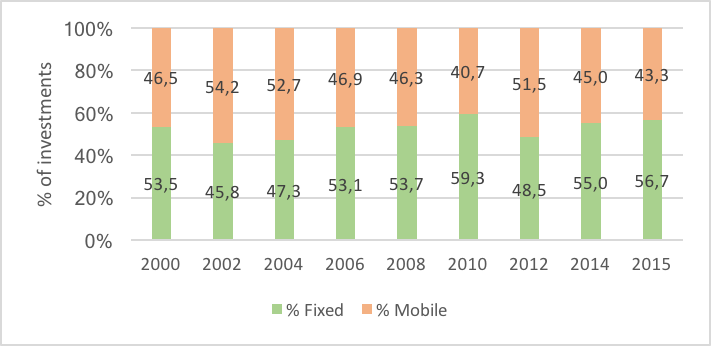 Figure 4. Shares of fixed and mobile networks in total investments (%)
Figure 4. Shares of fixed and mobile networks in total investments (%)
Data Source: AGCOM annual reports
The trend in total expenditures of private and business users is almost the same as the total revenues figure. As is shown in Figure 5, until 2006 total expenditures increased in a steady way until it reached almost 35.8 billion euros. However, from 2006 until 2014 a downward trend was evident. Although the total amount of expenditures has dropped also in 2015 comparing to 2014, the decrease was not as intense as in past years (1% comparing to an average of 7%).
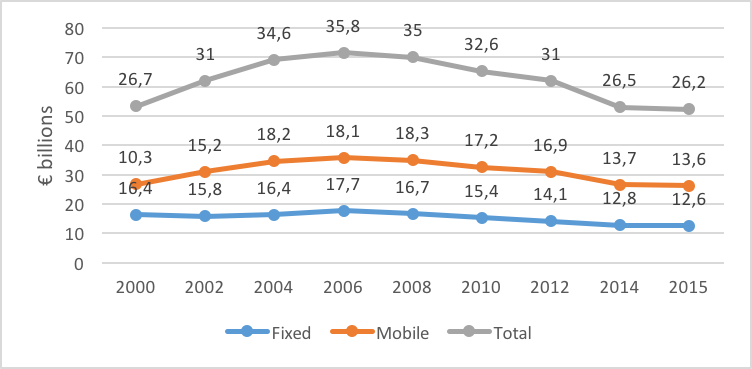 Figure 5. Final user expenditures (? billions)
Figure 5. Final user expenditures (? billions)
Data Source: AGCOM annual reports
Further, as the total user expenditures (i.e. the portion of household spending on telecommunications) strongly influences the total amount of revenues, the perceived trend in the corresponding diagram can be used to explain the similar pattern in total revenues.
The fixed telephony markets
As has been shown in the figures of total revenues and investments, while the revenues in fixed networks have been declining since 2006, the investments in this sector followed an increasing trend since 2012. The investment shares of active operators in the fixed networks market is shown in Figure 6. Although during all the years between 2000 and 2015, Telecom Italia was the major investor in the fixed networks, it is notable that since 2004 its share of investments has been declining and other licensed operators slightly increased their share of investments.
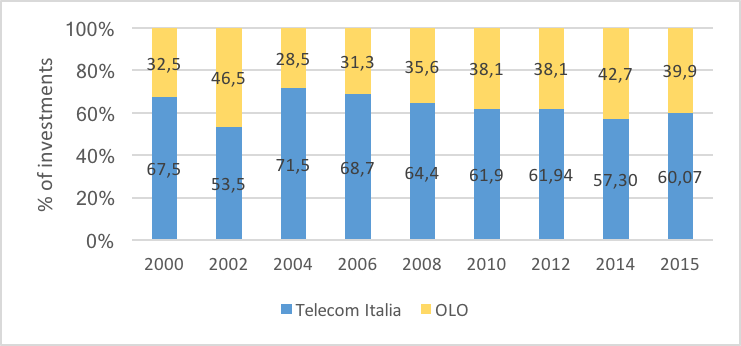 Figure 6. Operators? investment shares in fixed networks (%)
Figure 6. Operators? investment shares in fixed networks (%)
Data Source: AGCOM annual reports
Competition in the fixed networks market has improved in recent years. Figure 7 shows how shares of access of operators to fixed networks have changed between the years 2008 and 2013. The share of Telecom Italia has declined 17%, which gave opportunities for other operators to improve their position. In particular, Fastweb, Wind and Vodafone Italia have benefited from this situation.
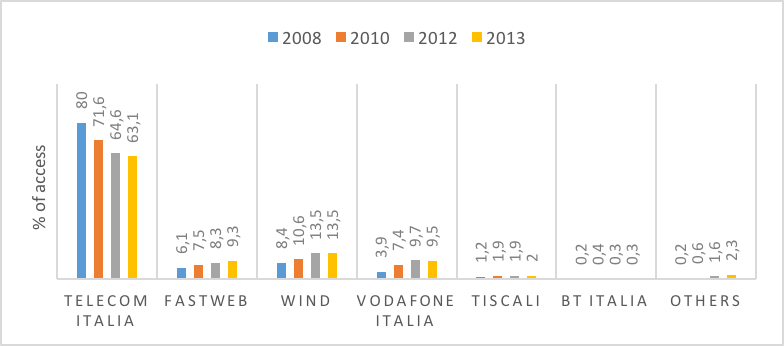 Figure 7. Shares of access to fixed networks (%)
Figure 7. Shares of access to fixed networks (%)
Data Source: AGCOM annual reports
Regarding the usage of unbundled local lines (ULLs), it seems that the regulatory decisions of AGCOM have been successful. By persuading the incumbent, Telecom Italia, to provide access to its broadband infrastructure for other licensed operators and implementing proper access pricing mechanisms, the usage of unbundled local lines has been increasing in the past decade. In a timespan of 10 years, the ULL usage, compared to total retail broadband lines, increased from 19% in 2003 to 38% in 2013 (Figure 8).
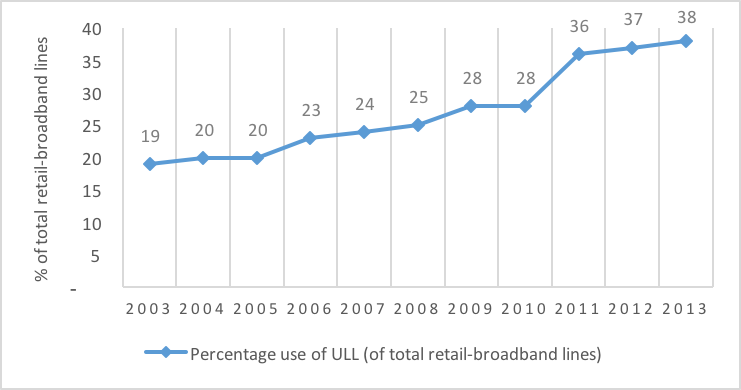 Figure 8. Percentage use of ULL (of total retail-broadband lines)
Figure 8. Percentage use of ULL (of total retail-broadband lines)
Data Source: European Commission, Digital Scoreboard
The mobile networks market
In the mobile segment of the telecommunications market as well as the fixed one, revenues have been declining since 2006. As is stated in AGCOM?s 2015 annual report:
?This trend is largely due to the concurrent action of several factors including: the regulatory action put in place by the Authority; the increasing price competition at retail level; the rapid technological changes that characterize the high-technology sectors; changes in the users' consumption habits; and the continuing economic crisis with the consequent reduction in average household expenditure.?
The two main segments of mobile networks are voice and data services. By means of recent technological developments, usage of traditional person-to-person voice services has declined relative to data-based services. For instance, the revenues generated by sending SMS have dropped sharply mainly due to the growing usage of social communication tools and Internet-based services. These changes in revenues would affect the operators? choice of investment (i.e. selecting business strategies which are more focused on improving data traffic based services).
The changes in mobile number portability are an indicator which is often used to assess the competitiveness of the mobile networks market. Figure 9 shows the trend in the cumulative and annual number of portability operations from 2005 until 2015. As can be seen, the cumulative values have increased continuously and have reached as much as 89 million units. This may be the result of resolutions no. 147/11/CIR and 651/13/CONS which require that customers should not be charged for the number portability service and that the requested service be implemented as soon as possible. However, the annual number of operations does not follow the same trend. In 2014 the annual measure declined by 32% which may be the result of new business strategies taken by the operators to increase customers? loyalty. Nevertheless, in 2015 the annual value increased again by 10%.
 Figure 9. Mobile number portability (millions)
Figure 9. Mobile number portability (millions)
Data Source: AGCOM annual reports
To understand the mobile market dynamics, it is useful to show the market shares of different operators in voice and data services. In both services the market concentration has declined significantly while the market share of operators other than Telecom Italia has increased in the past years. Another interesting point in the mobile networks market is the growth of operators providing mobile virtual services (MVNOs), which have obtained an increasing share in voice services and a stable one in data services since 2011.
As is shown in Figure 10, the market shares of two main mobile voice service providers, Telecom Italia and Vodafone, have followed a decreasing trend since 2005. Among others, Wind has particularly benefited from the situation and increased its share to 22.5% in 2015 compared to 13.2% in 2005. It is noticeable that in 2015, for the first time, Telecom Italia is no longer the leading operator with the highest market share as Vodafone has replaced it.
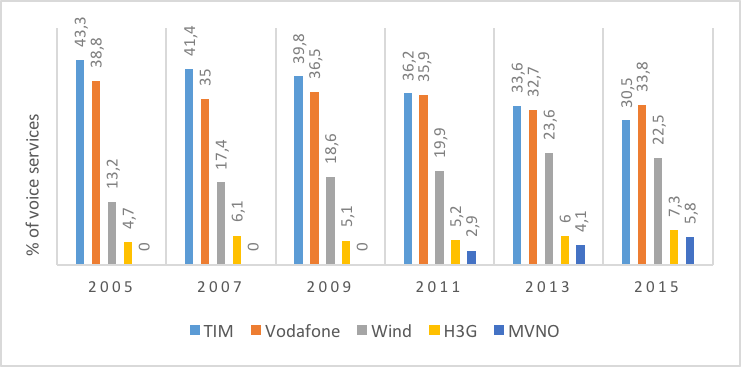 Figure 10. Market shares of voice services (%)
Figure 10. Market shares of voice services (%)
Data Source: AGCOM annual reports
In mobile data services the same trend as that of the voice services can be seen (Figure 11). The competition in the market has improved. However, in the data market, Telecom Italia and Vodafone had more intense competition and changed places as the market leader more often. Meanwhile, Wind and H3G have enjoyed an increasing market share since 2007, although the former had a greater improvement than the latter.
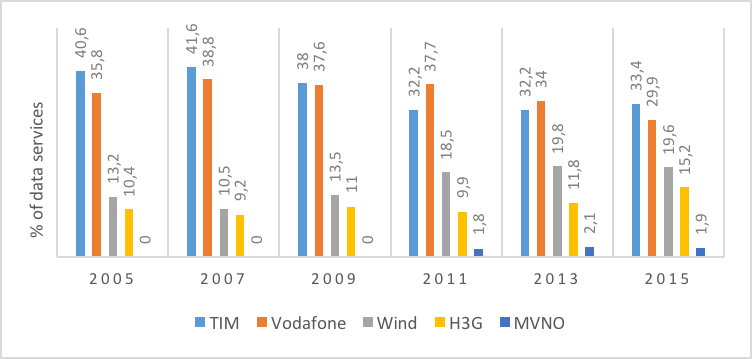 Figure 11. Market shares of data services (%)
Figure 11. Market shares of data services (%)
Data Source: AGCOM annual reports
Recent and future developments in NGN networks
Rapid technological developments in the telecommunications sector facilitate higher application of broadband services, leading to development of the ?next generation networks? (NGNs). In this context, the European Commission, in order to satisfy consumers? demand, has set specific broadband development goals under the ?Digital Agenda for Europe? (DAE). According to the European Commission (2010a), the DAE aims:
?to ensure that, by 2020,
- all Europeans have access to much higher internet speeds of above 30 Mbps and
- (ii) 50% or more of European households subscribe to internet connections above 100 Mbps?.
Italy, as well as other member states, is required to meet the DAE targets. In this Section we will briefly analyse the current and future technical context of the NGNs and ultra-broadband services. Then we will present the broadband services? supply and demand status in Italy. Finally, the Italian government?s plan for achieving the DAE targets will be discussed.
Although the capacity deliverable through the traditional copper networks has increased significantly in the last 15 years, the distance of data transmission has remained fairly low (from 50 to, at the most, 250 metres) (Cambini et al. 2016). Fibre technology, on the other hand, not only allows higher volumes of data to be transmitted but will also cover broader ranges through long distance fibre connections. However, developing and implementing ?next generation networks? (NGNs) requires large investments and since it would leave the traditional copper networks useless, it could be opposed by the incumbent. As a result, it is preferable to develop a technology which does not interfere with the incumbent?s interests, on one hand, and would require lower amounts of investments, on the other hand. A mixed network structure of cable, fibre and copper such as Fibre to The Cabinet (FTTCab) or Fibre to The Node (FTTN), can be a reasonable solution. However, the cost of providing such alternatives in areas of low population density is high and therefore to be able to fully cover all the areas, government intervention becomes inevitable. A feasible substitute with fairly lower expenses in such areas can be wireless technologies and mixed schemes such as Fibre to The Antenna Site (FFTAS).
On the other hand, as is stated in AGCOM (2015):
?The massive investments necessary for the construction of infrastructures and the uncertainty of the income generated by such investments, make the densely populated areas much more attractive than the rest of the country.?
Therefore, in highly populated areas where profits are fairly high and operators are active enough, the government?s intervention should be mainly in the form of regulatory settings. This kind of regulation is particularly important when the two infrastructures (traditional copper networks and NGNs) operate simultaneously during the transition phase from copper to fully fibre networks. In this context, access regulation in the two infrastructures can strongly impact the incentives to invest in the fiber networks. As is shown by Bourreau et al. (2012; 2014), the access price of the copper network can influence competition and investment in the NGN networks. More precisely, since the lower access prices of the copper networks will entail lower retail prices and eventually lower profitability of costly fibre networks, the lower will be the incentives to invest in the new NGN networks. In this framework, an alternative regulatory intervention should be developed.
As is suggested by Bourreau et al. (2015), geographical remedies (i.e. a transition from country-wide uniform measures to more locally-tailored regulation (Cambini et al. 2016)) would incentivise further investments in the next generation networks.
From a policy perspective, the European Commission in its 2009/140/EC Directive (??Better Regulation Directive??) forcefully calls for the adoption of new regulatory schemes aimed to provide a better environment for risky investments. NRAs might thus face the need to revise their market analysis, define new markets considering the competitive and geographic differences among areas and then adopt ad hoc remedies. However, with Decision 623/15/CONS, the Italian NRA decided neither to identify sub-national geographical markets, nor to geographically differentiate remedies. The evaluation of the development of competition in the different geographical areas has been postponed to the next market analysis, which shall take into account the need for a fair balance of the incentives, for both the SMP (Significant Market Power) operators and the other operators with a business interest in access services.
Broadband supply status
The access and coverage of broadband networks in Italy is affected by the country?s geographic and demographic characteristics, which have made it difficult to provide sufficient network infrastructure in all parts of the country. In this context, although both fixed and ultra-broadband coverage has increased continuously since 2011, in comparison to other European countries Italy does not rank highly in the development of NGN networks infrastructures (Figure 12). According to AGCOM (2016), although the numbers show a slight improvement: only 24.5% of the population have access to the broadband services while the measure for households is 57.7%.
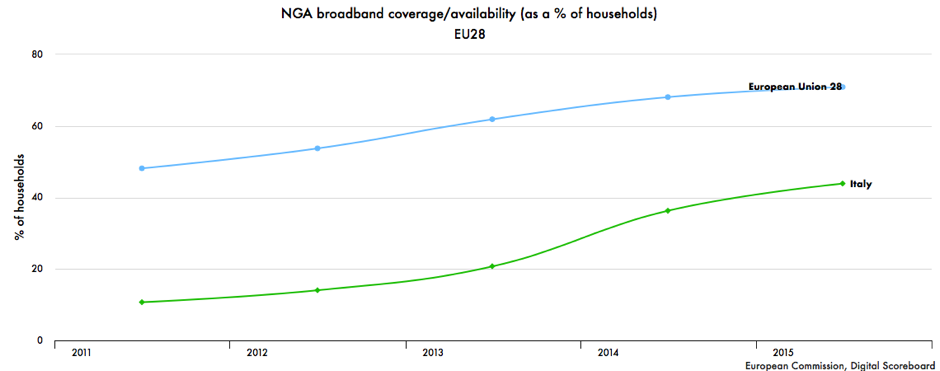 Figure 12. NGN broadband coverage (% of households)
Figure 12. NGN broadband coverage (% of households)
Source: European Commission, Digital Scoreboard
However, to meet the European 2020 Agenda, Italy has to develop two complementary network topologies: FTTH and FTTCab. To this end, Enel and Telecom Italia are currently the leaders of the necessary developments, with Enel focusing on developing NGN networks using its electricity infrastructures and Telecom Italia focusing on development of FTTH networks (Cambini et. al. 2016).
Demand in broadband networks
As for the demand side and the penetration of NGNs, Italy is far behind other EU member states. Although the country?s take-up rate in mobile broadband keeps up with the European figures, this is not the case in ultra-broadband networks (Europe's Digital Progress Report: Italy 2016). Figure 13 shows the fixed broadband take-up rate in Italy compared to the other 28 member states in the European Union. As can be observed, in earlier years the subscription rate in Italy was close to EU measures. However, the difference between them became greater and in 2015 while the EU take-up rate was 32%, it was only 24% in Italy.
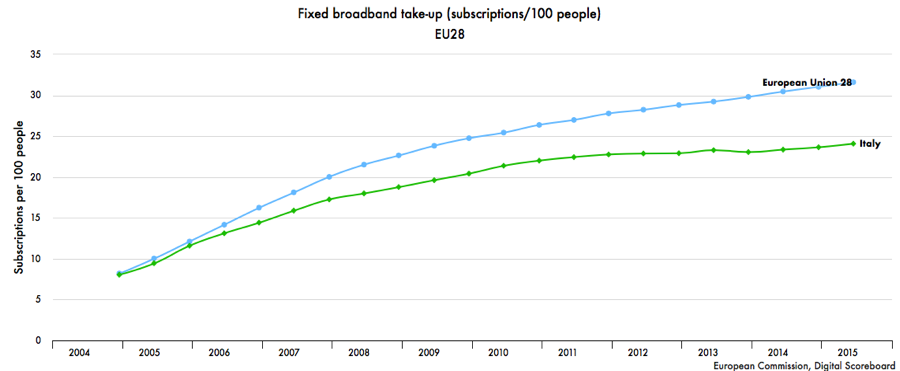 Figure 13. Fixed broadband take-up (subscriptions/100 people)
Figure 13. Fixed broadband take-up (subscriptions/100 people)
Source: European Commission, Digital Scoreboard
The reason for the low subscription rate in Italy, rather than lack of supply, is mostly related to the low interest in usage of ultra-broadband services (such as online services) on the part of the final users (Eurobarometer 2013). As is stated in AGCOM (2015):
?Regarding the propensity and the percentage of Internet use, Italy is only the twenty-seventh of the European Union countries, mainly because of the very low diffusion of IPTV and the reduced use of e-commerce?.
The Italian Government?s strategy
As was mentioned at the beginning of this chapter, to achieve the DAE targets of the ultra-broadband services? development, Italy is required to organise its actions through a development plan.
To this aim, the Italian Government on March 2015 has provided a ?Master Plan? to increase the pace of investment and development in ultra-broadband networks. A budget of 6.5 billion euros is set aside for this purpose, of which 2.2 billion has been already allocated for the first stage. The funds coming from the private sector are planned to be approximately equal. In addition, in order to organise and coordinate the activities through different phases of the program, a committee of various Ministries has been established.
In addition, according to AGCOM (2015), the Italian ultra-broadband strategy would include the following aspects:
?the simplification of administrative costs; the establishment of a register of existing infrastructures; the adaptation of limits on electromagnetism to those of other European countries; the introduction of tax incentives, credit at subsidized rates and grants; direct execution of public infrastructures in areas not covered by the market.?
The ?Master Plan? operates on a regional basis. Based on the current and future network infrastructures, four clusters are defined and similar territories are put together. As it is stated by Cambini et al. (2016):
?Two main pieces of regulation have set the boundaries and inspired most of the framework adopted in the Italian plan. First, the three objectives of the DAE, and second the Community guidelines for the application of the state aid discipline to the deployment of broadband networks.?
In particular, if the regulatory activities (such as ULL pricing) are not strong enough to provide sufficient incentives for further investment in NGN networks, state aid would be accessible as a complementary policy to provide such incentives. It is required that, among other actions, the public policies are set in a way that would incentivise investments and define and accelerate the decision-makers? relationships.
Notably, in January 2014 AGCOM and the Italian Competition Authority (AGCM) jointly launched (Decision 1/14/CONS) an investigation which highlighted how public intervention can intersect scenarios with different levels of the impact originated by competition and regulatory measures. In particular, following the results of the investigation, a market structure with only one ?pure? network operator, not vertically integrated and not supplying services to the final users, can be considered as the best scenario from both the competition and the regulation viewpoints at least in areas with limited infrastructure competition.
Conclusion
Following the European Commission directives regarding privatisation of the telecommunications market in Europe, AGCM and later AGCOM were established in Italy to provide a suitable legal framework. Their role is particularly important in defining fair regulatory policies in order to foster competition in the market. In this paper we have shown the evolutionary trends of the Italian telecommunications market since the beginning of the liberalisation process.
There are several results which highlight the success of the Italian government?s policies in promoting competition in the market. Following these policies, the incumbent, Telecom Italia, was fully privatised by 2002. Various operators have entered the market. As a result, the market share of Telecom Italia has decreased in both fixed and mobile networks and the market concentration index has constantly followed a declining trend in the past decade. This trend shows that the telecommunications market in Italy is still moving towards a dynamic and competitive structure.
However, rapid technological development and convergence between various sectors of the telecommunications industry is resulting in demand changes and creating new challenges. Therefore, faster and more efficient networks are required to satisfy growing consumer demands. In recent years, in order to overcome these challenges, many efforts have been made to foster the development of the relevant technologies such as ultra-fast broadband connections, i.e. the so called next generation networks.
On the one hand, compared to other EU member states, Italy does not hold a strong position regarding the coverage of broadband networks. Only 24% of the population have access to broadband services, in comparison to the EU?s average of 32%. Therefore, further investment in this sector is inevitable. On the other hand, Italy?s position in Europe regarding the demand for broadband is not high. Recent studies show that the problem of low penetration rates in ultra-broadband networks in Italy is strongly related to a lack of interest in exploiting these services rather than lack of supply.
Therefore, in order to achieve the targets set by the European Commission?s DAE, the Italian Government developed a strategic plan in 2015. The plan aims to facilitate the development of NGNs and to provide sufficient investment funds for broadband networks. However, in order to reach the DAE targets, the penetration rate needs to increase as well. In this context, it only seems logical to design policies in a way that they promote further usage of the ultra-broadband services and increase the take-up rate.
References
ACCC/AER. 2013. ?Better economic regulation of infrastructure: country based review?. Working Paper Series n.8, August 2013. Melbourne: Australian Competition and Consumer Commission.
Autorit? per le Garanzie nelle Comunicazioni (AGCOM). 2000-2016. ?The Communications Authority Annual Report?. Annual reports?on the activity carried out and on the work programmes. Naples. Available from: https://www.agcom.it/relazioni-annuali .
Bourreau, M.; Cambini, C.; Dogan, P. 2012. ?Access Pricing, Competition, and Incentives to Migrate From ?Old? to ?New? Technology?. International Journal of Industrial Organization 30, 713-723.
Bourreau, M; Cambini, C; Dogan, P. 2014. ?Access Regulation and the Transition from Copper to Fiber Networks in Telecoms?. Journal of Regulatory Economics 45(3), 233- 258.
Bourreau, M; Cambini, C; Hoerng, S. 2015. ?Geographical Access Markets and Investments?. Information Economics and Policy 31, 13-21.
Bregni, S; Melen, R. 2002. ?Local loop unbundling in the Italian network?. IEEE Communications Magazine, Volume 40, Issue 10, October 2002, pp 86-93.
Buigues, P.A. 2001. 'European policy on local loop unbundling competition law background and problems of implementation'. EURO CPR Conference 2001. October; Venice, Italy. Available from: http://ec.europa.eu/competition/speeches/index_theme_3.html .
Cambini, C; Polo, M; Sassano, A. 2016. ?Fiber to the people: The development of the ultra-broadband network in Italy?. Journal of Economic Policy, 32(2), 179-209.
European Commission Digital Single Market: Digital Scoreboard. 2016. ?Europe's Digital Progress Report (EDPR): Italy?. A report complementing the Digital Economy and Society Index (DESI) country profile. Brussels, 2016. Available from: https://ec.europa.eu/digital-single-market/en/scoreboard/italy .
European Commission Press Release. 2010a. ?Digital Agenda for Europe: key initiatives?. Brussels, 19 May 2010. Available from: http://europa.eu/rapid/press-release_MEMO-10-200_en.htm .
European Commission Press Release. 2010b. ?Digital Agenda: Commission endorses general model of Italian regulator to calculate wholesale access prices; asks it to recalculate maintenance and commercial costs?. Brussels, 21 October 2010. Available from: http://europa.eu/rapid/press-release_IP-10-1361_en.htm?locale=en .
OECD. 2001. ?Regulatory Reform in Italy: Regulatory Reform in the Telecommunications Industry?. Paris: OECD. Available at: http://www.oecd.org/regreform/2717568.pdf .
TNS Opinion & Social. 2013. ?E-Communications Household Survey?. Survey conducted for the European Commission, field work February-March 2013. Special Eurobarometer 396. Published in November 2013. Available from: http://ec.europa.eu/public_opinion/archives/ebs/ebs_396_en.pdf .
The World Trade Organization. ?Telecommunications services: Current commitments and exemptions?. Accessed 24 September 2016. Available from: https://www.wto.org/english/tratop_e/serv_e/telecom_e/telecom_e.htm .
Notes
[i] Before the approval of the Law n. 249/1997, the Ministry of Communication was in charge of setting the regulatory and industrial policies on the whole sector.

